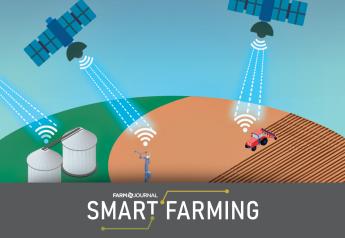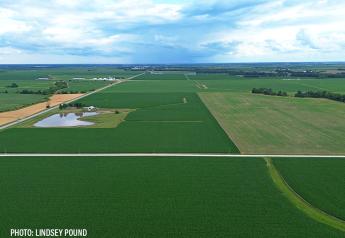Crop Tour's Good, Bad and Unforgettable

Chip Flory has a tight grip on agriculture’s ultimate tape measure. When an army of 150 scouts from 12 countries marches across U.S. farmland and spills into corn rows armed with ropes and smartphones, Flory knows there is a meticulous method to the madness.
The ensuing data haul of Crop Tour is an on-the-spot, bare-bones yield tally and likely the single most anticipated and followed industry event in U.S. agriculture. Watching from the periphery, the market waits in real time, keen to soak in vital first fruits numbers on crop yield and condition.
Farm Journal Midwest Crop Tour is in its silver anniversary year, and Flory, director of the Western leg and host of Market Rally has scrambled down farm roads and walked the rows on all 25. Whether unveiling lofty bin busters or ghastly zeroes, Flory says Crop Tour has no compare: “There is nothing, just nothing like the immediacy of this information as it flows from field to industry. It’s always been so fast, but now the data goes out at light speed with Facebook and Twitter. Even after 25 years, I’m still jazzed to go again.”
Across those 25 years, particular crops cling tightest to Flory’s memory.
Boom
In 1994, Crop Tour coverage was contained in Illinois, Indiana, Iowa, Ohio, and a sliver of Minnesota, but Flory witnessed phenomenally consistent corn across the region that made for a record crop. “In 1994, you could be in central Indiana or central Iowa and stand on the edge of a field and assume it would be within five bushels of the last field you checked. It was almost every time. Phenomenal.”
Flory says the monster crop of 2016 was also benchmark: “I’d say 2016 showed a lot about what the new genetics could do. The roof got blown off the charts because we checked fields in southwest Minnesota up to 320 bu. per acre.”
Bust
Rain makes grain … except when it doesn’t stop raining. The worst crop based on market expectations was grown in 1993, according to Flory. In a flood year west of the Mississippi River, crops essentially drowned. “Plants couldn’t generate energy because it was cloudy and rained almost every day,” he remembers.
Flory recalls walking in ankle-deep mud and pulling samples in Iowa and Minnesota that yielded a paltry 25 to 40 bu. per acre: “That was the first year we ran Crop Tour and considering expectations going in, that was the single worst crop I’ve seen.”
However, Flory is quick to add the drought of 2012, which resulted in some fields at a zero. “It was extremely bad in 2012, just awful. But the difference was we expected poor fields. We were taken by surprise in 1993,” he explains.
Memorable
One of Flory’s most unforgettable moments relates directly to the dismal crop of 1993. As Crop Tour moved through Illinois, Indiana and Ohio, Flory knew yields would be anemic further west. A crop scout in Flory’s immediate group remained adamant that the best yields lay ahead: “This scout fought me and fought me, telling me it would get so much better in Iowa and Minnesota. When we finally arrived, I sat in the car and told him to get out and see if he could find an ear of corn. He came back with three little stubs and I’ll never, never forget the look of shock on his face.”
Unique
Year after year, Flory loves the day-to-day frenzy of what has developed into a U.S. agriculture mainstay: Farm Journal Midwest Crop Tour. “There are so many situations where it’s so fun and keeps us coming back every year. It’s a great and vital learning process, but good grief, we try to have fun and get things done at the same time. You also can’t be with a finer group of people because there is nothing like the camaraderie of Crop Tour.”







